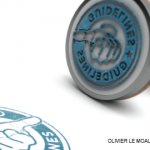“When we talk about osteoarthritis of the hand, we’re talking about specific joints, primarily the carpal metacarpal (CMC) joints of the thumb, the interphalangeal (IP) joints of the digits, especially where we see the Heberden’s and Bouchard’s node formation, and the carpals,” said Ms. Dodge. “So our exercises focus on these joints. We want to do range-of-motion exercises that help patients gain mobility in these joints, and we want to strengthen and stabilize the affected joints.”
Ms. Dodge shared examples of exercises to stabilize and strengthen these joints, including holding a tennis ball or squeezing it between the thumb and other digits, and using exercise putty to strengthen hand muscles. “Patients need at least 20 lbs. of grip strength for functional activities, like opening containers or pulling on boots, so we need to be sure we’re giving them the tools to reach those goals,” she said.
Conditional recommendations for hand OA include:
- Kinesiotaping of the CMC joints to improve grip and pinch strength;
- Orthotics, which include more flexible neoprene supports for CMC joints used during daytime activities and stiffer thermoplastic supports for joints to decrease pain at night during sleep, as well as ring orthoses that support individual digits;
- Gloves, primarily for comfort and pain management;
- Physical modalities, such as ice packs or warm paraffin wax baths that patients may use daily to increase flexibility before they perform hand exercises at home;
- Iontophoresis, a battery-powered pain relief patch used to target discomfort in specific small joints, which may be combined with the application of a small amount of topical dexamethasone;
- Manual therapy, including soft-tissue manipulation exercises that therapists can teach patients to perform on their hands at home;
- Massage therapy; and
- Acupuncture.
Ms. Dodge shared a case of an 81-year-old female patient who was diagnosed with erosive OA in her hands. She illustrated how both strong and conditional recommendations were used to improve the patient’s thumb and IP joint pain, and her CMC joint strength and stability: strengthening exercises, kinesiotaping, orthotics, gloves, a paraffin wax bath and manual therapy. In addition, her occupational therapy included behavioral adaptation.
“We taught her to use her palms when she engaged with her environment, and to lift with both hands and use her forearms when she lifted objects. She was able to integrate different techniques to lessen her pain, and that was our overall goal,” said Ms. Dodge.


